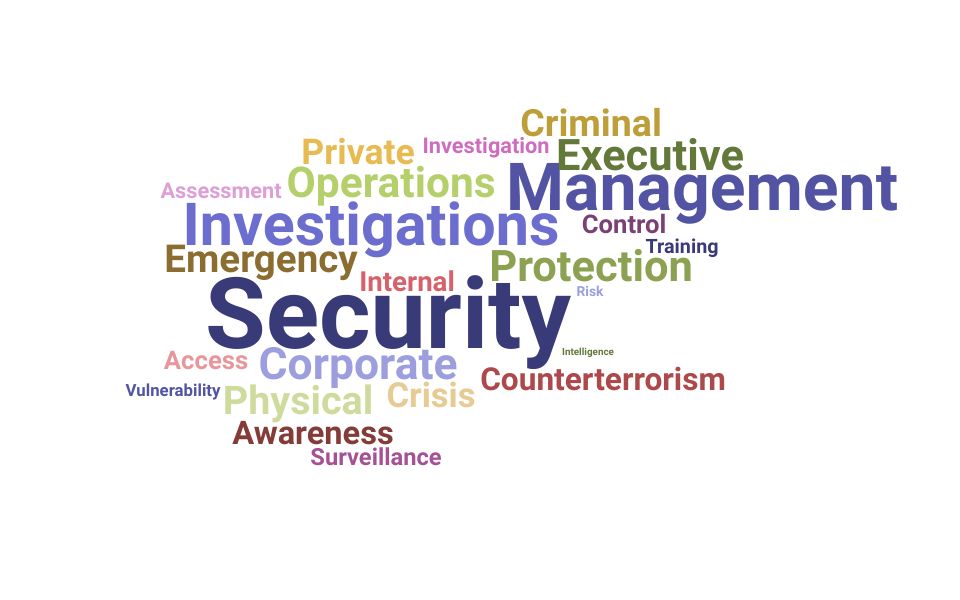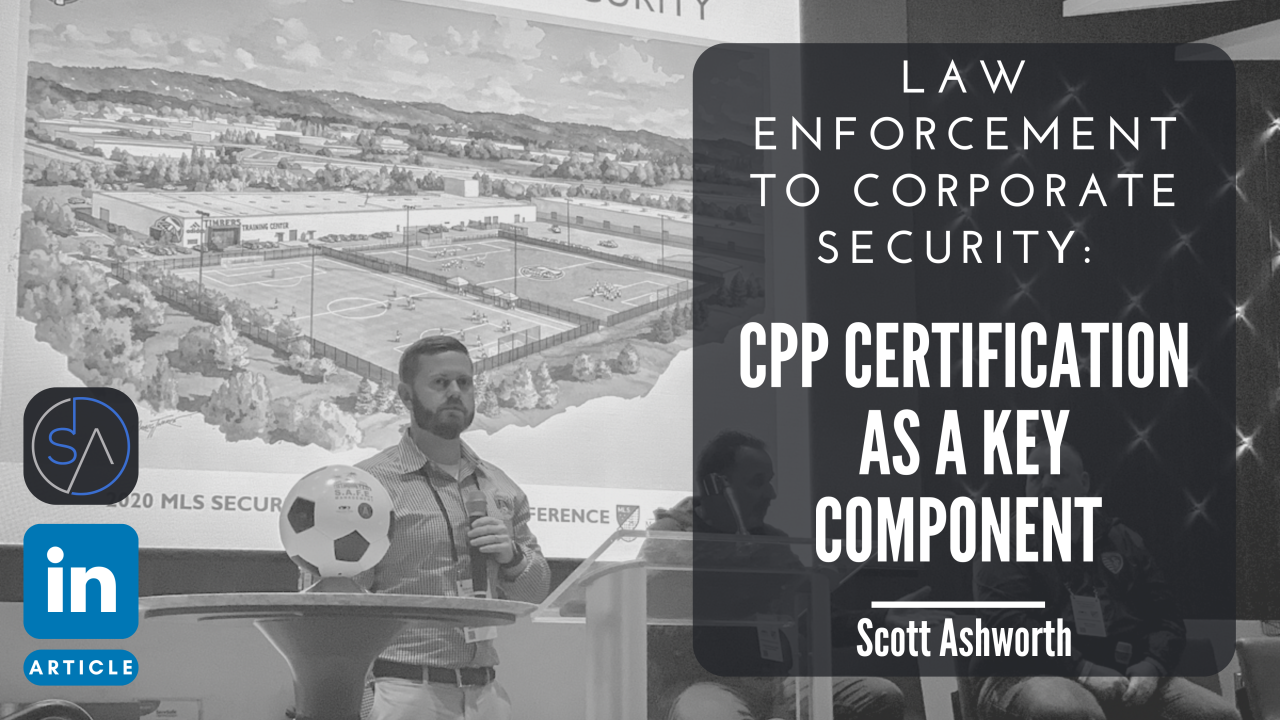Corporate Security Demystified: Enhancing Your Service Defenses
Corporate Security Demystified: Enhancing Your Service Defenses
Blog Article
From Cybersecurity to Physical Procedures: Strengthening Corporate Safety in a Transforming Globe
In today's quickly advancing digital landscape, the importance of business safety can not be overstated. As cyber threats become widespread and increasingly advanced, organizations should go past standard cybersecurity measures to secure their procedures and properties - corporate security. This is where the combination of physical protection procedures becomes critical. By integrating the toughness of both cybersecurity and physical security, business can create a thorough defense method that attends to the diverse array of risks they deal with. In this discussion, we will explore the altering danger landscape, the requirement to integrate cybersecurity and physical security, the application of multi-factor verification steps, the importance of staff member recognition and training, and the adaptation of safety procedures for remote labor forces. By taking a look at these key areas, we will get important insights right into just how organizations can reinforce their corporate safety and security in an ever-changing world.
Understanding the Altering Threat Landscape
The progressing nature of the modern world necessitates an extensive understanding of the altering danger landscape for efficient business safety and security. It is essential for organizations to remain informed and adjust their safety determines to address these advancing threats.
One trick facet of understanding the changing threat landscape is identifying the various kinds of threats that organizations face. In addition, physical hazards such as theft, vandalism, and corporate reconnaissance continue to be widespread problems for organizations.
Surveillance and analyzing the hazard landscape is important in order to identify potential risks and vulnerabilities. This includes remaining updated on the most up to date cybersecurity trends, examining risk intelligence records, and conducting normal risk assessments. By understanding the changing danger landscape, organizations can proactively implement appropriate safety and security steps to mitigate risks and safeguard their properties, credibility, and stakeholders.
Integrating Cybersecurity and Physical Protection
Integrating cybersecurity and physical security is important for thorough corporate protection in today's interconnected and digital landscape. As companies progressively count on modern technology and interconnected systems, the boundaries in between physical and cyber risks are coming to be obscured. To efficiently protect against these threats, a holistic method that incorporates both cybersecurity and physical safety and security actions is necessary.
Cybersecurity concentrates on shielding electronic properties, such as networks, data, and systems, from unauthorized accessibility, disturbance, and burglary. Physical safety, on the various other hand, encompasses measures to safeguard physical properties, people, and centers from susceptabilities and hazards. By incorporating these 2 domain names, organizations can deal with vulnerabilities and hazards from both physical and digital angles, consequently enhancing their overall protection posture.
The combination of these two techniques permits a much more thorough understanding of security risks and allows a unified feedback to occurrences. For example, physical gain access to controls can be enhanced by integrating them with cybersecurity procedures, such as two-factor authentication or biometric identification. Cybersecurity measures can be matched by physical security procedures, such as security cams, alarm systems, and safe access points.

Executing Multi-Factor Verification Steps
As companies increasingly focus on extensive protection measures, one efficient approach is the execution of multi-factor verification procedures. Multi-factor authentication (MFA) is a safety and security method that calls for users to supply several types of identification to access a system or application. This technique adds an additional layer of security by incorporating something the individual understands, such as a password, with something they have, like a safety and security or a finger print token.
By executing MFA, organizations can dramatically enhance their safety and security stance - corporate security. Traditional password-based verification has its restrictions, as passwords can be quickly jeopardized or forgotten. MFA reduces these risks by adding an extra authentication aspect, making it harder for my review here unapproved individuals to access to delicate info
There are several types of multi-factor authentication techniques available, including biometric authentication, SMS-based confirmation codes, and equipment symbols. Organizations need to evaluate their certain demands and pick the most appropriate MFA option for their demands.
Nonetheless, the implementation of MFA ought to get redirected here be meticulously planned and carried out. It is crucial to strike an equilibrium in between safety and security and usability to prevent customer stress and resistance. Organizations ought to also take into consideration possible compatibility concerns and give appropriate training and support to ensure a smooth change.
Enhancing Worker Awareness and Training
To reinforce business safety and security, companies need to focus on enhancing employee understanding and training. Lots of protection breaches occur due to human mistake or lack of understanding.
Effective staff member awareness and training programs ought to cover a wide variety of topics, including data security, phishing assaults, social design, password health, and physical protection measures. These programs should be tailored to the specific needs and responsibilities of various staff member roles within the organization. Routine training simulations, sessions, and workshops can assist staff members establish the essential abilities and knowledge to identify and react to safety and security hazards effectively.
Additionally, organizations ought to encourage a culture of safety understanding and supply recurring updates and tips to keep staff members notified about the most up to date dangers and reduction techniques. This can be done via interior communication networks, such as newsletters, intranet sites, and e-mail campaigns. By cultivating a security-conscious workforce, companies can considerably reduce the probability of safety and security cases and secure their valuable properties from unauthorized accessibility or concession.

Adapting Security Measures for Remote Workforce
Adjusting business security procedures to fit a remote labor force is essential in guaranteeing the security of delicate details and properties (corporate security). With the increasing trend of remote work, organizations should carry out appropriate safety measures to alleviate the threats related to this brand-new means of functioning
One crucial aspect of adapting protection actions for remote job is establishing safe interaction channels. Encrypted view messaging systems and digital exclusive networks (VPNs) can aid protect delicate details and avoid unapproved access. Additionally, organizations ought to implement using strong passwords and multi-factor verification to boost the security of remote gain access to.
One more vital factor to consider is the implementation of safe and secure remote gain access to remedies. This involves providing employees with secure accessibility to business sources and information via digital desktop framework (VDI), remote desktop computer procedures (RDP), or cloud-based solutions. These technologies ensure that delicate information continues to be safeguarded while making it possible for employees to execute their duties properly.

Last but not least, comprehensive protection understanding training is vital for remote workers. Training sessions must cover best methods for safely accessing and dealing with sensitive information, recognizing and reporting phishing attempts, and keeping the overall cybersecurity hygiene.
Verdict
In conclusion, as the risk landscape remains to evolve, it is vital for companies to enhance their safety measures both in the cyber and physical domains. Incorporating cybersecurity and physical safety and security, implementing multi-factor authentication actions, and improving employee recognition and training are essential steps in the direction of accomplishing durable business protection. In addition, adapting safety and security procedures to suit remote labor forces is critical in today's changing globe. By applying these steps, organizations can minimize threats and secure their important assets from possible dangers.
In this conversation, we will discover the altering hazard landscape, the requirement to integrate cybersecurity and physical protection, the application of multi-factor verification measures, the importance of staff member understanding and training, and the adaptation of safety and security steps for remote workforces. Cybersecurity procedures can be matched by physical safety and security measures, such as monitoring video cameras, alarm systems, and safe accessibility factors.
As organizations increasingly focus on detailed safety and security steps, one efficient strategy is the application of multi-factor verification steps.In conclusion, as the hazard landscape proceeds to progress, it is vital for organizations to strengthen their protection measures both in the cyber and physical domain names. Integrating cybersecurity and physical safety and security, executing multi-factor verification measures, and boosting worker understanding and training are important actions towards achieving durable business safety and security.
Report this page